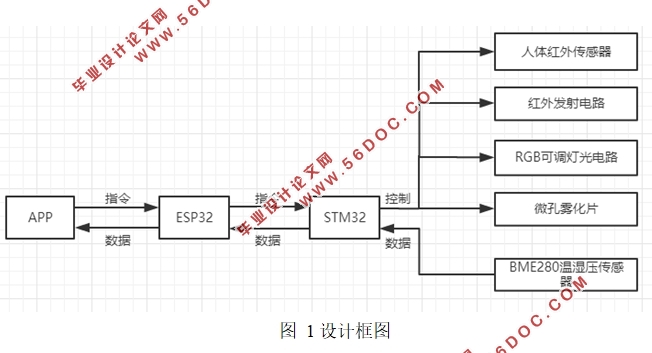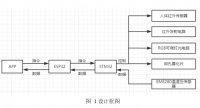基于ESP32的家居物联网设计
来源:56doc.com 资料编号:5D20902 资料等级:★★★★★ %E8%B5%84%E6%96%99%E7%BC%96%E5%8F%B7%EF%BC%9A5D20902
资料以网页介绍的为准,下载后不会有水印.资料仅供学习参考之用. 密 保 惠 帮助
资料介绍
基于ESP32的家居物联网设计(论文11000字)
摘要:时至今日,物联网发展了近20年,得力于无线通讯行业的成熟,手机和家电以此为媒介实现数据传输。本文基于ESP32,以STM32为核心控制芯片,设计了一个可以兼容普通家用电器的物联网控制系统,包含有ESP32模组、红外编码电路、安卓手机APP、BME280温湿度传感器、RGB灯光可调电路、人体红外传感器、微孔雾化片模块,能够通过ESP32将温湿度发送到手机APP上,并且实现对空调、灯光、加湿器的物联网控制,达到了传统家电无须进行升级改造即可进行手机联网控制以及简单自动化任务设定。
关键词:
STM32;智能家居;安卓客户端;esp32;无线通讯
Home Internet of Things Design Based on ESP32
Abstract:Today, mobile communication has experienced four generations of development. Smartphones have completely subverted the way we work,study,socialize, and entertain. This article is based on ESP32, with STM32 as the core control chip and designs an IoT control system that can be compatible with ordinary household appliances, including ESP32 module, infrared encoding circuit,Android mobile phone APP, BME280 temperature and humidity sensor, RGB light adjustable circuit, The human body infrared sensor and the microporous atomization chip module.It can send the temperature and humidity to the mobile phone APP through the ESP32, and realize the control of the Internet of Things,lighting, and humidifier's Internet of Things.It can achieve the control of the mobile phone networking without upgrading the traditional home appliances and simple automated task settings.
Key words:
STM32;Smart home;Android client;esp32;wireless communication

目录
1 绪论 1
1.1研究背景及意义 1
1.2 国内外现状 1
1.3主要研究内容 2
2 系统方案设计 2
2.1 系统设计任务 2
2.2 系统设计框图 3
3 开发方法的选择与论证 3
3.1 开发平台的选择和论证 3
3.2通讯协议的选择与论证 4
3.3温湿度检测电路的选择与论证 5
3.4.硬件电路设计 6
3.4.1 STM32最小系统设计 6
3.4.2 红外发射与接收电路 7
3.4.3 ESP32最小系统 9
3.4.4 BME280温湿度传感器 12
3.4.5 RGB控制电路 12
3.4.6 人体红外传感器HC-SR501 13
3.4.7 微孔雾化片 14
第四章系统程序设计 14
4.1软件开发环境简介 14
4.2软件设计流程图 15
4.3 程序功能简介 16
4.3.1 esp32程序源码 16
4.3.2空调红外编码 17
第五章 Android 客户端的设计与实现 18
5.1IDE选择与开发环境搭建 18
5.2 Android项目结构 18
5.3 Android 客户端的组成和实现 20
5.3.1 界面设计 20
5.3.2 UDP通信 20
5.3.3 交互设计 21
第六章总结与展望 21
6.1总结 21
6.2展望 22
参考文献 22
致谢 23
|



